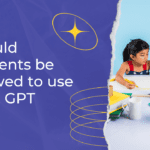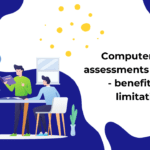Table of contents
Introduction
It’s really important for the Class 10 students to understand the Class 10 curriculum with the NCERT Syllabus for Class 10 2023-2024. It covers important aspects and aligns with the latest CBSE pattern. Preferred by CBSE-affiliated schools and state boards, the NCERT syllabus for class 10 adds value to the curriculum. By reviewing the curriculum, students become familiar with marks distribution, unit-wise syllabus, paper pattern, and practical details, enhancing their exam preparation.
Knowing these elements helps students to plan their timetable, schedule tasks, and excel in their exams. It also boosts self-confidence, which ultimately leads to better performance. The NCERT Syllabus for Class 10 is designed according to the NCERT syllabus for class 10 (NCF) and aligned with the CBSE pattern.
This blog covers the NCERT syllabus for class 10, all subjects, along with units and subunits, in a detailed manner.
You can clearly see what units are included in the current syllabus for all subjects.
Let’s start with mathematics.
The policy emphasizes nurturing individual creativity and developing cognitive, social, ethical, and emotional capacities. It focuses on foundational skills like literacy and numeracy and higher-order thinking like critical thinking and problem-solving.
By aligning with the vision of New Education Policy 2023, developed a student nurturing platform SETU that helps build inter-personality skills as stated in NEP 2020.
NCERT Syllabus for Class 10 Mathematics:
The NCERT syllabus is widely recognized and followed across schools in India. It provides a standardized curriculum, ensuring uniformity in mathematics education for Class 10 students.
The syllabus is designed to align with the CBSE board examinations. Studying the prescribed topics ensures that students are well-prepared for the exam and can confidently attempt questions based on the syllabus.
The syllabus lays a strong foundation in mathematical concepts and principles essential for higher-level studies and real-life applications.
The following are the units covered in 10th-class mathematics. They are:
Units:
- Number Systems
- Algebra
- Trigonometry
- Coordinate Geometry
- Geometry
- Mensuration
- Statistics and Probability
Appendix:
- Proofs in Mathematics
- Mathematical Modelling
Unit I: Number Systems
Real Numbers (Periods 15)
Euclid’s division lemma, Fundamental Theorem of Arithmetic – statements after reviewing work done earlier and after illustrating and motivating through examples. Proofs of results – irrationality of 2, 3, 5, decimal expansions of rational numbers regarding terminating/non-terminating recurring decimals.
Unit II: Algebra
1. Polynomials (Periods 6)
Zeros of a polynomial. Relationship between zeros and coefficients of a polynomial with particular reference to quadratic polynomials. Statement and simple problems on division algorithms for polynomials with real coefficients.
Zeros of a polynomial. Relationship between zeros and coefficients of a polynomial with particular reference to quadratic polynomials. Statement and simple problems on division algorithms for polynomials with real coefficients.
2. Pair of Linear Equations in Two Variables (Periods 15)
Pair of linear equations in two variables. Geometric representation of different possibilities of solutions/inconsistency.
Algebraic conditions for a number of solutions. Solution of pair of linear equations in two variables algebraically – by substitution, elimination and cross multiplication. Simple situational problems must be included. Simple problems on equations reducible to linear equations may be included.
3. Quadratic Equations (Periods 15)
The standard form of a quadratic equation is ax2+ bx + c = 0, (a ≠ 0). Solution of quadratic equations (only real roots) by factorizing and completing the square, i.e. using the quadratic formula. Relationship between discriminant and nature of roots. Problems related to day-to-day activities to be incorporated.
4. Arithmetic Progressions (AP) (Periods 8)
Motivation for studying AP. Derivation of standard results of finding the nth term and sum of first n terms.
Unit III: Trigonometry
1. Introduction to Trigonometry (Periods 18)
Trigonometric ratios of an acute angle of a right-angled triangle. Proof of their existence (well defined); motivate the ratios, whichever are defined at 0° and 90°. Values (with proofs) of the trigonometric ratios of 30°, 45° and 60°. Relationships between the ratios.
Trigonometric Identities: Proof and applications of the identity sin2 A + cos2 A = 1. Only simple identities to be given. Trigonometric ratios of complementary angles.
2. Heights and Distances (Periods 8)
Simple and believable problems on heights and distances. Problems should not involve more than two right triangles. Angles of elevation/depression should be only 30 degree, 45 degree, 60 degree.
Unit IV: Coordinate Geometry
Lines (In two-dimensions) (Periods 15)
Review the concepts of coordinate geometry done earlier including graphs of linear equations. Awareness of geometrical representation of quadratic polynomials. Distance between two points and section formula (internal). Area of a triangle.
Unit V: Geometry
1. Triangles (Periods 15)
Definitions, examples, counterexamples of similar triangles.
1. (Prove) If a line is drawn parallel to one side of a triangle to intersect the other two sides indistinct points, the other two sides are divided in the same ratio.
2. (Motivate) If a line divides two sides of a triangle in the same ratio, the line is parallel to the third side.
3. (Motivate) If in two triangles, the corresponding angles are equal, their corresponding sides are proportional and the triangles are similar.
4. (Motivate) If the corresponding sides of two triangles are proportional, their corresponding angles are equal and the two triangles are similar.
5. (Motivate) If one angle of a triangle is equal to one angle of another triangle and the sides including these angles are proportional, the two triangles are similar.
6. (Motivate) If a perpendicular is drawn from the vertex of the right angle to the hypotenuse, the triangles on each side of the perpendicular are similar to the whole triangle and to each other.
7. (Prove) The ratio of the areas of two similar triangles is equal to the ratio of the squares on their corresponding sides.
8. (Prove) In a right triangle, the square on the hypotenuse is equal to the sum of the squares on the other two sides
9. (Prove) In a triangle, if the square on one side is equal to sum of the squares on the other two sides, the angles opposite to the first side is a right triangle.
2. Circles (Periods 8)
Tangents to a circle motivated by chords drawn from points coming closer and closer to the point.
- (Prove) The tangent at any point of a circle is perpendicular to the radius through the point of Contact.
2. (Prove) The lengths of tangents drawn from an external point to a circle are equal.
3. Constructions (Periods 8)
- Division of a line segment in a given ratio (internally).
- Tangent to a circle from a point outside it.
- Construction of a triangle similar to a given triangle
Unit VI: Mensuration
- Areas Related to Circles (Periods 12)Motivate the area of a circle; area of sectors and segments of a circle. Problems based on areas and perimeter/circumference of the above said plane figures.
(In calculating area of segment of a circle, problems should be restricted to central angle of 60°, 90° and 120° only. Plane figures involving triangles, simple quadrilaterals and circle should be taken.)
2. Surface Areas and Volumes (Periods 12)
- Problems on finding surface areas and volumes of combinations of any two of the following: cubes, cuboids, spheres, hemispheres and right circular cylinders/cones. Frustum of a cone.
- Problems involving converting one type of metallic solid into another and other mixed problems. (Problems with combinations of not more than two different solids can be taken.)
Unit VII: Statistics and Probability
1. Statistics (Periods 15)
Mean, median and mode of grouped data (bimodal situation to be avoided). Cumulative frequency graph.
2. Probability (Periods 10)
Classical definition of probability. Connection with probability as given in Class IX. Simple problems on single events, not using set notation.
Appendix
1. Proofs in Mathematics
Further discussion on the concept of ‘statement’, ‘proof ’ and ‘argument’. Further illustrations of deductive proof with complete arguments using simple results from arithmetic, algebra and geometry. Simple theorems of the “Given ……… and assuming… prove ……..”.
Training of using only the given facts (irrespective of their truths) to arrive at the required conclusion. Explanation of ‘converse’, ‘negation’, constructing converses and negations of given results/statements.
2. Mathematical Modeling
Reinforcing the concept of mathematical modeling, using simple examples of models where some constraints are ignored. Estimating probability of occurrence of certain events and estimating averages may be considered. Modeling fair installment payments, using only simple interest and future value (use of AP).
NCERT Syllabus for Class 10 English:
NCERT Syllabus for Class 10 English holds significant importance because students not only improve their language skills but also cultivate a deeper appreciation for literature, develop higher-order thinking skills, and acquire essential life skills. It equips them with the foundation for higher education, career opportunities, and effective communication in various contexts.
The syllabus focuses on developing language skills, including reading, writing, listening, and speaking. It enhances students’ overall communication abilities, which are crucial for academic and personal growth.
Units
- Reading Skills (50 Periods)
- Writing Skills and Grammar (50 Periods)
- Grammar (50 Periods)
- Literature Textbook (50 Periods)
Unit-I Reading Skills:
- Two unseen passages with a maximum word limit of 750 words
- Objective Type Questions (including Multiple Choice Questions), Very Short Answer Type Questions (one word/ one phrase / one sentence) and Short Answer Type Questions (30-40 words each)
Unit-II: Writing Skills:
- Email to school authorities (Application for leave/ change of subject /change of section/ bus-timings or similar topics) in maximum 50 words.
- Factual Description of a person/object in maximum 100 words
- One out of two formal letters, in maximum 120 words, thematically aligned to topics in MCB.
- One out of two articles based on verbal cues, in maximum 150 words, thematically aligned to MCB topics.
Unit-III Grammar:
- Tenses
- Modals
- Subject–verb concord
- Reported speech
- Clauses
- Determiners
Unit-IV: Literature Textbook:
- Two out of three extracts from prose/poetry for reference to the context. Very Short Answer Questions will be asked to assess global comprehension, interpretation, inference and evaluation.
- Five Short Answer type Questions out of six from the Literature Reader to test local and global comprehension of theme and ideas, analysis, evaluation and appreciation (30-40 words each)
- One out of two Long Answer type Questions to assess how the values inherent in the text have been brought out. Creativity, evaluation and extrapolation beyond the text and across the texts will be assessed. This can also be a passage-based question taken from a situation/plot from the texts. (150 words).
NCERT Syllabus for Class 10 Social Science:
The NCERT Syllabus for Class 10 Social Science covers various disciplines like History, Geography, Political Science, and Economics. It provides a holistic understanding of society’s social, political, and economic aspects, fostering well-rounded knowledge.
It helps students grasp the underlying principles of social science subjects and develop a solid foundation for higher-level studies. Moreover, it equips students with knowledge and skills to actively participate in society and contribute to its betterment.
Class 10 Social Science is divided into History, Geography, Political science and Economics.
- NCERT Class 10 History Syllabus
- NCERT Class 10 Geography Syllabus
- NCERT Class 10 Political Science Syllabus
- NCERT Class 10 Economics Syllabus
NCERT Class 10 History Syllabus
History: India and the Contemporary World – II
Units:
I.Events and Processes
II: Economies and Livelihoods
III: Culture, Identity and Society
Unit I Events and Processes
1. Nationalism in Europe
(a) The growth of nationalism in Europe after the 1830s.
(b) The ideas of Giuseppe Mazzini etc.
(c) General characteristics of the movements in Poland, Hungary, Italy and Germany, Greece.
2. Nationalist Movement in Indo-China
(a) French colonialism in Indo-China.
(b) Phases of struggle against the French.
(c) The ideas of Phan Dinh Phung, Phan Boi Chau, Nguyen Ai Quoc (Ho Chi Minh).
(d) The second world war and the liberation struggle.
(e) America and the second Indo-China war.
3. Nationalism in India: Civil Disobedience Movement
(a) First world war, Khilafat and Non-Cooperation.
(b) Salt Satyagraha.
(c) Movements of peasants, workers, tribals.
(d) Activities of different political groups
Unit II Economies and Livelihoods
4. Industrialisation 1850s–1950s
(a) Contrast between the form of industrialization in Britain and India.
(b) Relationship between handicrafts and industrial production, formal and informal sectors.
(c) Livelihood of workers.
Case studies: Britain and India
5. Urbanization and Urban Lives
(a) Patterns of urbanization
(b) Migration and the growth of towns.
c) Social change and urban life.
(d) Merchants, middle classes, workers and urban poor.
Case studies: London and Bombay in the nineteenth and twentieth century.
6. Trade and Globalization
(a) Expansion and integration of the world market
in the nineteenth and early twentieth century.
(b) Trade and economy between the two Wars.
(c) Shifts after the 1950s.
(d) Implications of globalization for livelihood
patterns.
Case studies: The post War International Economic Order, 1945 to the 1960s
Unit III Culture, Identity and Society
7. Print Culture and Nationalism
(a) The history of print in Europe.
(b) The growth of the press in nineteenth century India.
(c) Relationship between print culture, public debate and politics.
8. History of the Novel
(a) Emergence of the novel as a genre in the west.
(b) The relationship between the novel and changes
in modern society.
(c) Early novels in nineteenth century India.
(d) A study of two or three major writers.
NCERT Class 10 Geography Syllabus:
Geography: Contemporary India – II Chapters
Chapter1: Resources and Development
Chapter2: Forest and Wildlife resources
Chapter3: Agriculture
Chapter4: Water Resources
Chapter 5: Mineral Resource
Chapter 6:Power resources
Chapter 7: Manufacturing industries
Chapter 8:Transport, communication and trade.
Chapter1: Resources and Development(8 periods)
- Natural and human; Need for resource planning.
- Natural Resources: Land as a resource, soil formation, types and distribution; changing land-use pattern; land degradation and conservation measures
Chapter2: Forest and Wildlife resources60 periods)
Types and distribution,depletion of flora and fauna; conservation and protection of forests and wildlife
Chapter3: Agriculture(10 periods)
Types of farming, major crops, cropping patterns, technological and institutional reforms; their impact; contribution of Agriculture to national economy — employment and output, food security, impact of globalization.
Chapter4: Water Resources(6 periods)
Sources, distribution, utilization, multipurpose projects, water scarcity, need for conservation and management, rainwater harvesting. (One case study to be introduced)
Chapter 5: Mineral Resource(5 periods)
Types of minerals, distribution, use and economic importance of minerals, conservation.
Chapter 6:Power resources(5 periods)
Types of power resources – conventional and non-conventional, distribution and utilization, and conservation.
Chapter 7: Manufacturing industries(5 periods)
Types, spatial distribution, contribution to industries to the national economy, industrial pollution and degradation of environment, measures to control degradation. (One case study to be introduced)
Chapter 8: Transport, communication and trade.(5 Periods)
Transport, communication and trade
NCERT Class 10 Political Science Syllabus
Chapters:
Chapter 1:Power Sharing(7 periods)
Chapter 2: Federalism(8 Periods)
Chapter 3: Gender, Religion and Caste(12 periods)
Chapter 4:Political Parties(12 periods)
Chapter 5: Outcomes of Democracy(11 Periods)
NCERT Class 10 Economics Syllabus:
Chapters:
Chapter1: Development
Chapter2: Sectors of Indian Economy
Chapter3: Money and Credit
Chapter 4: Globalization and the Indian Economy
Chapter 5: Consumer Rights
Chapter1: Development(12 Periods)
The traditional notion of development – National Income and Per-capita Income – Growth of NI – critical appraisal of existing development indicators (PCI, IMR, SR and other income and health indicators) – The need for health and educational development – Human Development Indicators (in simple and brief) as a holistic measure of development. The approach to this theme: Use case study of three states (Kerala, Punjab and Bihar) or take a few countries (India, China, Sri Lanka and one developed country).
Chapter2: Sectors of Indian Economy(12 Periods)
What is service sector (through examples); Importance of Service Sector in generating Employment and Income to the nation (with the help of a few case studies); Growth of Service Sector in India; India as a major service provider to the world; The need for public investment – The role of important infrastructure – education and health.
Chapter3: Money and Credit(12 periods)
Role of money in an economy – Historical Origin; Formal and Informal financial institutions for Savings and Credit – General Introduction; Select one formal institution such as a nationalized commercial bank and a few informal institutions – Local money lenders, landlords, self help groups, chit funds and private finance companies.
Chapter 4:Globalization and the Indian Economy(8 Periods)
What is Globalization (through some simple examples); How India is being globalized and why – Development Strategy prior to 1991 – State Control of Industries: Textile goods as an example for elaboration; Economic Reforms 1991; Strategies adopted in Reform measures (easing of capital flows; migration, investment flows); Different perspectives on globalization and its impacts on different sectors; Political Impacts of globalization.
Chapter 5: Consumer Rights(6 Periods)
How consumer is exploited (one or two simple case studies) – factors causing exploitation of consumers – Rise of consumer awareness – how a consumer should be in a market – role of government in consumer protection
NCERT Syllabus for Class 10 Hindi A and Hindi B:
The syllabus focuses on developing language proficiency in Hindi, including reading, writing, speaking, and comprehension skills. It aims to enhance students’ ability to effectively communicate and express themselves in Hindi.
The syllabus includes a diverse range of literary works in Hindi, such as poems, stories, and essays. It exposes students to various literary genres, renowned authors, and themes, fostering a love for Hindi literature and enhancing their analytical and interpretive skills.
NCERT Class 10 Hindi A syllabus 2024




CBSE Class 10 Hindi B Syllabus 2024




NCERT Syllabus for Class 10 Information Technology
The NCERT Syllabus for Class 10 Information Technology focuses on developing digital literacy skills, including computer basics, internet usage, and digital safety. It equips students with essential knowledge and skills to navigate the digital world effectively.
The syllabus emphasizes hands-on learning and practical application of IT concepts. Students gain proficiency in using productivity tools, creating digital content, programming basics, and data handling, enhancing their technological competence.
PART A: Employability Skills
Unit 1 – Communication Skills-II
Unit 2 – Self-Management Skills-II
Unit 3 – ICT Skills-II
Unit 4 – Entrepreneurial Skills-II
Unit 5 – Green Skills-II
PART B: Subject Specific Skills
Unit 1 – Digital Documentation (Advanced)
Unit 2 – Electronic Spreadsheet (Advanced)
Unit 3 – Database Management System
Unit 4 – Web Applications and Security
PART C: Practical Work
- Advanced Documentation
- Advanced Spreadsheets
- Databases
- Viva Voce
PART D: Project Work/Field Visit
Project Work/Field Visit .
Any Interdisciplinary Real World Case Study to be taken. Summarized data reports of the same can be presented in base. Input should be taken using forms and output should be done using reports using base. Documentation of the case study should be presented using a writer.
Portfolio/Practical File
Portfolio should contain printouts of the practical done using Writer, Calc and Base with minimum 5 problems of each.
NCERT Syllabus for Class 10 Science:
The syllabus provides a strong foundation for students interested in pursuing science-related careers. It introduces them to fundamental scientific principles and methodologies, preparing them for higher studies in science and technology fields.
Real-World Connections: The syllabus connects scientific concepts to real-world applications, making science relevant and engaging for students. It enables them to understand the scientific basis of everyday phenomena, technological advancements, and environmental challenges.
UNITS:
Unit-I: Chemical Substances – Nature and Behaviour
Unit-II: World of Living
Unit-III: Natural Phenomena
Unit-IV: Effects of Current
Unit-V: Natural Resources
Unit-I: Chemical Substances – Nature and Behaviour
- Chemical Reactions
- Acids, Bases and Salts
- Metals and Non-metals
- Carbon Compounds
Unit-II: World of Living
- Life Processes
- Control and Coordination in Animals and Plants
- Reproduction
- Heredity and Evolution
Unit-III: Natural Phenomena
- Reflection of Light by Curved Surfaces
- Refraction
- Refraction of Light by Spherical Lens
- Refraction of Light Through a Prism
Unit-IV: Effects of Current
- Electric Current, Potential Difference and Electric Current
- Magnetic Effects of Current
Unit-V: Natural Resources
- Conservation of Natural Resources
- The regional environment
- Sources of energy
List of Unit-wise Class 10 Science Experiments
The experiment list provides an idea of new Science projects, a list of experiments and activities. So, students must go through this Practical CBSE Syllabus for Class 10 Science.
CBSE Class 10 Science Practical Syllabus
Unit I
- A. Finding the pH of the following samples by using pH paper/universal indicator
(i) Dilute Hydrochloric Acid
(ii) Dilute NaOH solution
(iii) Dilute Ethanoic Acid solution
(iv) Lemon juice
(v) Water
(vi) Dilute Hydrogen Carbonate solution
B. Studying the properties of acids and bases (HCl & NaOH) on the basis of their reaction with:
Litmus solution (Blue/Red)
Zinc metal
Solid sodium carbonate
- Performing and observing the following reactions and classifying them into:
A. Combination reaction
B. Decomposition reaction
C. Displacement reaction
D. Double displacement reaction
i) Action of water on quicklime
ii) Action of heat on ferrous sulphate crystals
iii) Iron nails kept in copper sulphate solution
iv) Reaction between sodium sulphate and barium chloride solutions
- A. Observing the action of Zn, Fe, Cu and Al metals on the following salt solutions:
ZnSO4(aq)
FeSO4(aq)
CuSO4(aq)
Al2(SO4)3(aq)
Arranging Zn, Fe, Cu and Al (metals) in the decreasing order of reactivity based on the above result.
- Study of the following properties of acetic acid (ethanoic acid)
i) Odour
ii) solubility in water
iii) effect on litmus
iv) reaction with Sodium Hydrogen Carbonate
5. Study of the comparative cleaning capacity of a sample of soap in soft and hard water.
Unit II
1. Preparing a temporary mount of a leaf peel to show stomata.
2. Experimentally show that carbon dioxide is given out during respiration.
3. Studying (a) binary fission in Amoeba and (b) budding in yeast and Hydra with the help of prepared slides.
4. Identification of the different parts of an embryo of a dicot seed (Peas, gram or red kidney bean).
4. Identification of the different parts of an embryo of a dicot seed (Peas, gram or red kidney bean).
Unit III
- Determination of the focal length of:
i) Concave mirror
ii) Convex lens
by obtaining the image of a distant object.
2. Tracing the path of a ray of light passing through a rectangular glass slab for different angles of incidence. Measure the angle of incidence, angle of refraction, and angle of emergence and interpret the result.
3. Tracing the path of the rays of light through a glass prism.
Unit IV
1. Studying the dependence of potential difference (V) across a resistor on the current (I) passing through it and determining its resistance. Also, plotting a graph between V and I.
2. Determination of the equivalent resistance of two resistors when connected in series and parallel.











Leave a reply